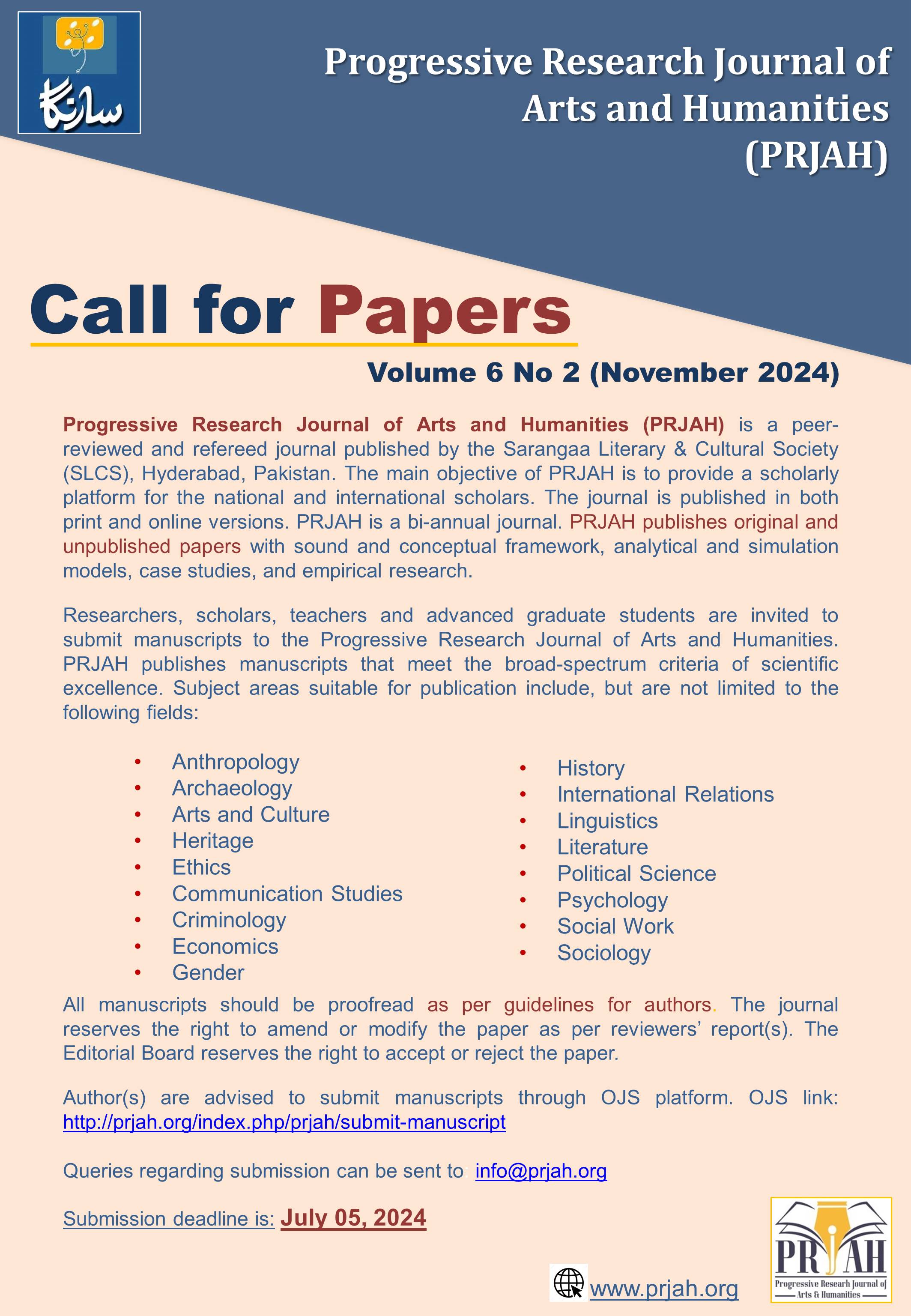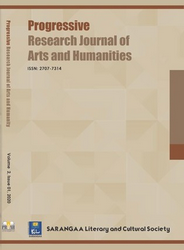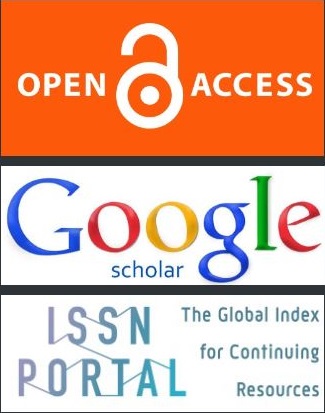The Influence of Digital Banking Services on Financial Performance: A Focus on Customer Experience
DOI:
https://doi.org/10.51872/prjah.vol6.Iss1.311Keywords:
Digital banking services; Customer experience; Financial performances; Private banking sector.Abstract
This study highlights the critical role that customer experience plays in illuminating the complex relationship between digital banking services and the private banking sector's financial performance. This study investigates the mediating relationship between customer experiences in digital banking and financial performance. An online survey questionnaire is based on a convenience sample technique; cross-sectional data is employed in this study to conclude the findings. Three hundred sixty-one functional responses were extracted, and the structural equation model (SEM) was used to analyze the data to provide the final results. This research study may provide policymakers and banking sector planners in Pakistan with a fresh perspective on how to provide particular thought and create an environment that can be helpful for the achievement of profitable financial benefits. The impact of digital banking services and customer experience on the financial performance of the private banking sector of Hyderabad, Sindh, Pakistan. This research will explore how digital banking services ensure easy information delivery, minimize fraud, and provide marketable products to provide the best services to customers and enhance financial performance. With this practice, practitioners and policymakers can make such policies that can ultimately enhance the financial performance of the private banking sector.
References
Amidjaya, P. G., &Widagdo, A. K. (2020). Sustainability reporting in Indonesian listed banks: Do corporate governance, ownership structure and digital banking matter? Journal of Applied Accounting Research, 21(2), 231-247.
Amin, M. (2016). Internet banking service quality and its implication on e-customer satisfaction and e-customer loyalty. International Journal of Bank Marketing, 34(3),280–306.
Baba, Y. (2012). Adopting a specific innovation type versus composition of different innovation types Case study of a Ghanaian bank. International Journal of Bank Marketing, 30(3), 218–240.
Berry, L. L., Carbone, L. P., & Haeckel, S. H. (2002). Managing the total customer experience. MIT Sloan Management Review, 43(3), 85–89.
Chi, C.G., & Gursoy, D. (2009). Employee satisfaction, customer satisfaction and financial performance: an empirical examination. International Journal of Hospitality Management, 28(2), 245-253.
Davis, F. D. (1989). Perceived usefulness, perceived ease of use, and user acceptance of information technologies. MIS Quarterly, 13(3), 319–340.
Dijkhuizen, J., Gorgievski, M., van Veldhoven, M., & Schalk, R. (2018). Well-being, personal success and business performance among entrepreneurs: a two-wave study. Journal of Happiness Studies, 19, 2187-2204.
Garg, R., Rahman, Z., & Qureshi, M. N. (2014). Measuring customer experience in banks: scale development and validation. Journal of Modelling in Management, 9(1),87–117.
Grönroos, C. (1984). A Service quality model and its marketing implications. European Journal of Marketing, 18(4), 36–44.
Haider, Z., Rahim, A., & Aslam, F. (2019). Antecedents of online banking adoption in Pakistan: An empirical study. International Research Journal of Arts and Humanities, 47(47), 197.
Hair, J.F., Risher, J.J., Sarstedt, M., & Ringle, C.M. (2019). When to use and how to report the results of PLS-SEM. European Business Review, 31(1), 2-24.
Hu, Z., Ding, S., Li, S., Chen, L., & Yang, S. (2019). Adoption intention of fintech services for bank users: An empirical examination with an extended technology acceptance model. Symmetry, 11(3). https://doi.org/10.3390/sym11030340.
Jun, M.,& Palacios, S. (2016). Examining the key dimensions of mobile banking service quality: an exploratory study. International Journal of Bank Marketing, 34(3), 307-326.
Keisidou, E., Sarigiannidis, L., Maditinos, D. I., & Thalassinos, E. I. (2013). Customer satisfaction, loyalty and financial performance. International Journal of Bank Marketing, 31(4), 259-288.
Khalid, A., Pan, F., Li, P., Wang, W., & Ghaffari, A. S. (2020). The impact of occupational stress on job burnout among bank employees in Pakistan, with psychological capital as a mediator. Frontiers in Public Health, 7, 410. https://doi.org/10.3389/fpubh.2019.00410.
Khan, I. U. (2022). How does culture influence digital banking? A comparative study based on the unified model. Technology in Society, 68, 101822.
Khan, I. U., Hameed, Z., Khan, S. N., Khan, S. U., & Khan, M. T. (2022). Exploring the effects of culture on acceptance of online banking: A comparative study of Pakistan and Turkey by using the extended UTAUT model. Journal of Internet Commerce, 21(2), 183-216.
Klaus, P., & Maklan, S. (2013). Towards a better measure of customer experience. International Journal of Market Research, 55(2), 227–246.
Leong, K. (2018). FinTech (Financial Technology): What is it, and how to use technologies to create business value in a fintech way? International Journal of Innovation, Management and Technology, 9(2), 74–78. https://doi.org/10.18178/ijimt.2018.9.2.791.
Levy, S.,& Hino, H. (2016). Emotional brand attachment: a factor in customer-bank relationships. International Journal of Bank Marketing, 34(2), 136-150
Milne, A. (2019). Centre for Applied Macroeconomic Analysis, are the research gaps? Industrial Management & Data Systems, 3(1), 1–9.
Mohanty, S., Singh, S., & Mohanty, J. (2023). A Systematic literature review of customer satisfaction on digital banking. Handbook of Research on the Interplay between Service Quality and Customer Delight, pp. 48–71.
Nazir, S., Akhtar, M. N., & Irshad, M. Z. (2011). Why banks and financial institutions in Pakistan are turning toward Internet banking? International Journal of Computer Science Issues, 8(6), 265-274.
Oliveira, T., Thomas, M., Baptista, G., & Campos, F. (2016). Mobile payment: Understanding the determinants of customer adoption and intention to recommend the technology. Computers in Human Behavior, 61, 404-414.
Parasuraman, A., Zeithaml, V. A.,& Berry, L. L. (1988). SERVQUAL: A Multiple-item scale for measuring consumer perceptions of service quality. Journal of Retailing, 64(1), 12–40.
Rahi, S., Ghani, M. A., & Ngah, A. H. (2018). A structural equation model for evaluating user's intention to adopt internet banking and intention to recommend technology. Accounting, 4(4), 129-170. doi: 10.5267/j.ac.2018.3.002.
Scott, S. V., Van Reenen, J., & Zachariadis, M. (2017). The long-term effect of digital innovation on bank performance: An empirical study of SWIFT adoption in financial services. Research Policy , 46 (5), 984–1004. https://doi.org/10.1016/j.respol.2017.03.010.
Servon, L. J., & Kaestner, R. (2008). Consumer financial literacy and the impact of online banking on the financial. The Journal of Consumer Affairs Summer, 42(2), 271-305.
Shahzad, F., Xiu, G., & Shahbaz, M. (2017). Organizational culture and innovation performance in Pakistan's software industry. Technology in Society, 51, 66-73.
Valenzuela, L., Torres, E., Hidalgo, P., & Farías, P. (2014). Salesperson CLV orientation's effect on performance. Journal of Business Research, 67(4), 550-557.
Verhoef, P., Lemon, K., Parasuraman, A., Roggeveen, A., Tsiros, M., & Schlesinger, L.(2009). customer experience creation: determinants, dynamics and management strategies. Journal of Retailing, 85(1), 31-41.
Wadesango, N., & Magaya, B. (2021). Literature review on the impact of digital banking services on performance of commercial banks. African Journal of Development Studies, 11(2), 149.
Zavolokina, L., Dolata, M., & Schwabe, G. (2016). The FinTech phenomenon: antecedents of financial innovation perceived by the popular press. Financial Innovation, 2(1), 1-16. https://doi.org/10.1186/s40854-016-0036-7.
Downloads
Published
How to Cite
Issue
Section
License
Copyright (c) 2024 Progressive Research Journal of Arts & Humanities (PRJAH)

This work is licensed under a Creative Commons Attribution 4.0 International License.






